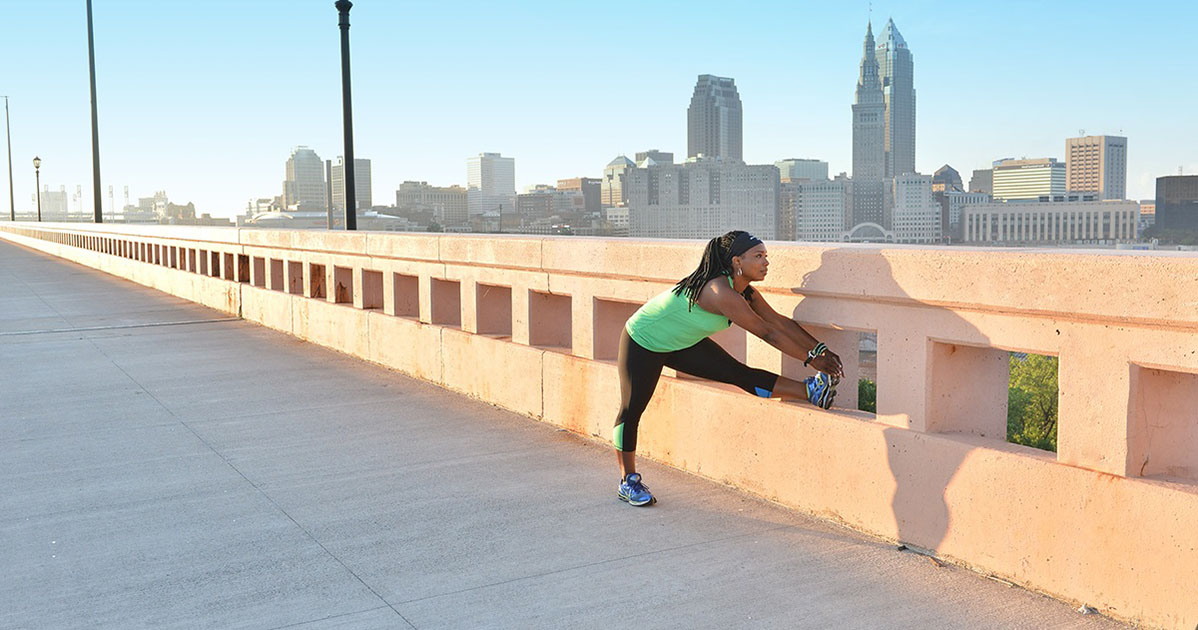Good news for weekend warriors: A recent study found that fitting in the recommended 150 minutes of moderate-intensity exercise on Saturday and Sunday can help you live longer.
The problem is, working out only on the weekend raises your risk of getting hurt. Tendonitis, sprains and strains are common problems.
Doctors typically recommend regular exercise throughout the week to help avoid these injuries. Ideally, people should get about 30 minutes of cardio every day and strength training three times a week to build or maintain muscle and stretching two or three times a week to help with flexibility.
Can’t find the time? Here are seven tips to help weekend warriors avoid injury:
Warm Up First
Before you begin your workout, warm up with a few minutes of light cardio, such as walking, and then a few minutes of light stretching. Try to stretch all your muscles. Hold each stretch for 20 to 30 seconds and repeat at least once.
Tackle a Range of Exercises
Combine cardio, strength and flexibility exercises into your routine. Walk or jog for cardio, take a yoga class for stretching and lift weights for strength training. Or, while on a hike, find a rock to do some elevated planks to build your core muscles or do triceps dips to work your arms. Be sure to stretch along the way.
Optimize Your Strength Training
Make sure you’re strengthening muscles in the front and back of your body. You need to strengthen muscles that work against each other, like biceps and triceps. Working just the muscles you can see (so-called “mirror muscles”) which tend to be in the front of the body, can create imbalances in muscle strength and problems with flexibility.
Know Your Target Heart Rate
Knowing your target heart rate can prevent overexertion. Subtract your age from 220 to calculate your maximum heart rate. Your target heart rate is 60 to 80 percent of that number. Aim to reach it during your workouts. For example, if you are 40 years old you should aim to have a heart rate of 108-144 beats per minute during your workout.
220 – 40 years of age = 180
180 x .60 = 108
180 x .80 = 144
Target heart rate: 108 to 144 beats per minute
Cool Down
Don’t forget to cool down after your workout. Light cardio helps to gradually decrease your heart rate and can prevent dizziness. Add some stretches to help prevent muscle soreness later.
Listen to Your Body
Don’t push yourself to extremes. Rest when you need to, stay hydrated and ease up or stop if you experience any pain.
Talk to Your Doctor
Talk to your doctor before starting any exercise program to make sure it’s safe.
Lower Body
Calf muscles are located on the back of your lower legs.
- Stand at arm’s length from a wall or solid surface, with your feet hip width apart
- Step your right foot back while gently bending your left knee
- Place your right heel on the floor and your right knee straight
- Keep your leg and back straight while holding the stretch for 20 to 30 seconds
- Switch sides and repeat
Hamstrings run along the back of each thigh.
- Stand with your legs hip-width apart
- Slowly bend at the waist, keeping your legs straight, and fold over
- Touch the floor or gently place your hands on the back of your legs to deepen the stretch
Quads are in the front of your thigh.
- Place your right hand on a wall or a solid surface, with your body turned sideways
- Move your left heel toward your glutes and grab your left ankle with your left hand
- Gently pull until you feel your muscles stretch
- Switch sides and repeat
Upper Body
Triceps are in the back of your upper arms.
- Stand with your feet hip-width apart
- Raise your right arm until it is beside your right ear
- Bend your right elbow and place your right hand on your back near the left shoulder blade
- Reach over your head with your left arm and place it on your right elbow
- Gently pull on your elbow until your feel a stretch in your biceps
Biceps are in the front of your upper arms.
- Stand with your feet hip-width apart
- Clasp your hands behind your back
- Straighten the arms and gently turn your clasped palms downward
- Slowly move your arms away from the body until you feel a stretch in the biceps
Shoulder
- Stand with feet hip-distance apart
- Bring your right arm across your body
- Hold your right arm with your left hand below the elbow
- Gently pull until you feel a stretch
- Switch arms and repeat
Neck
- Bend your head down and to the right
- Place your right hand on the left side of your head
- Gently pull downward to stretch the left side of your neck
- Switch sides and repeat











